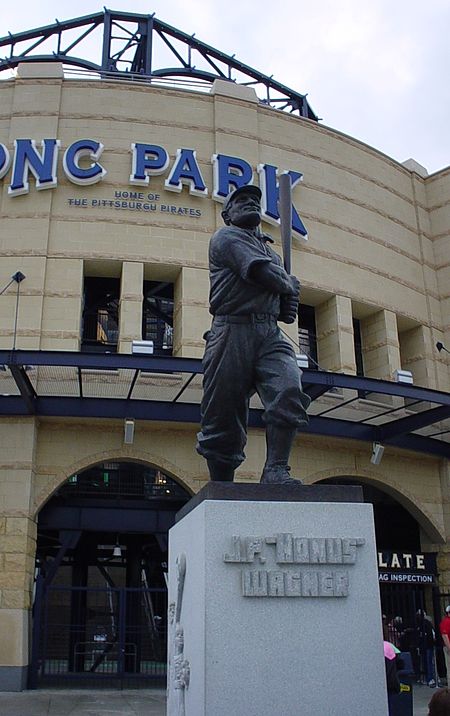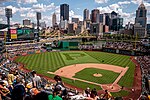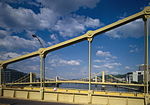Honus Wagner (Vittor)
1954 establishments in Pennsylvania1954 sculpturesBaseball cultureBronze sculptures in PennsylvaniaCultural depictions of American men ... and 7 more
Cultural depictions of baseball playersMonuments and memorials in PittsburghOutdoor sculptures in PennsylvaniaPublic art stubsSculptures of men in PennsylvaniaStatues in PennsylvaniaStatues of sportspeople

Honus Wagner is a bronze statue by Frank Vittor, created to honor former Pittsburgh Pirates shortstop Honus Wagner. It is located at PNC Park, Pittsburgh, Pennsylvania.
Excerpt from the Wikipedia article Honus Wagner (Vittor) (License: CC BY-SA 3.0, Authors, Images).Honus Wagner (Vittor)
West General Robinson Street, Pittsburgh
Geographical coordinates (GPS) Address Nearby Places Show on map
Geographical coordinates (GPS)
| Latitude | Longitude |
|---|---|
| N 40.44666 ° | E -80.00671 ° |
Address
PNC Park
West General Robinson Street
15212 Pittsburgh
Pennsylvania, United States
Open on Google Maps











